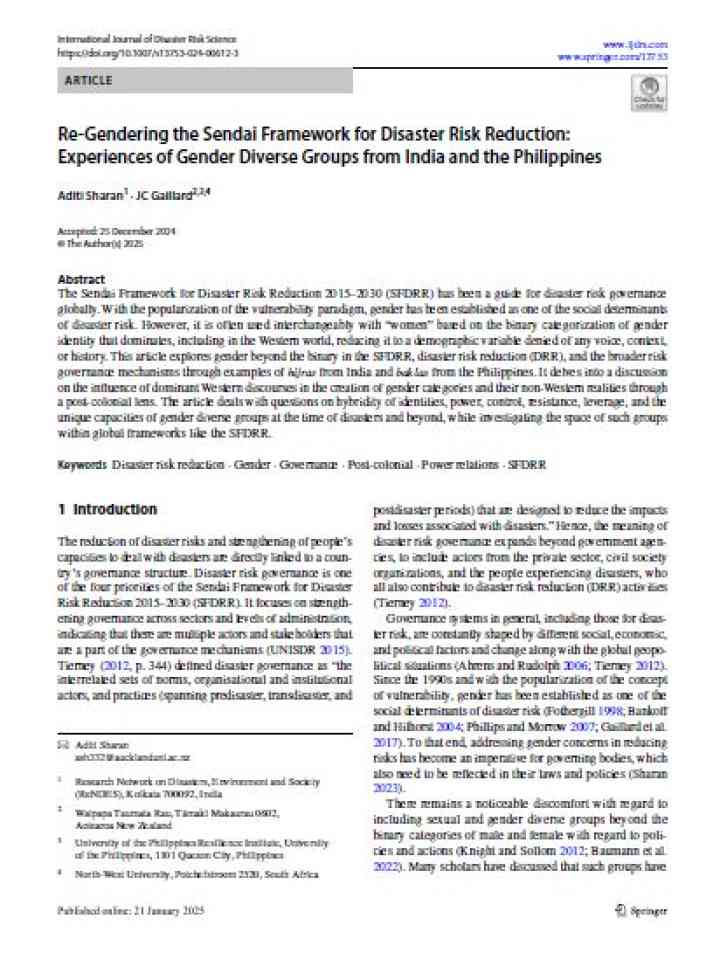Re-gendering the Sendai Framework for Disaster Risk Reduction: Experiences of gender diverse groups from India and the Philippines
This article explores gender beyond the binary in the Sendai Framework for Disaster Risk Reduction 2015–2030 (SFDRR), disaster risk reduction (DRR), and the broader risk governance mechanisms through examples of hijras from India and baklas from the Philippines. With the popularization of the vulnerability paradigm, gender has been established as one of the social determinants of disaster risk. However, it is often used interchangeably with “women” based on the binary categorization of gender identity that dominates, including in the Western world, reducing it to a demographic variable denied of any voice, context, or history.
This article delves into a discussion on the influence of dominant Western discourses in the creation of gender categories and their non-Western realities through a post-colonial lens. The article deals with questions on hybridity of identities, power, control, resistance, leverage, and the unique capacities of gender diverse groups at the time of disasters and beyond, while investigating the space of such groups within global frameworks like the SFDRR.
Explore further
